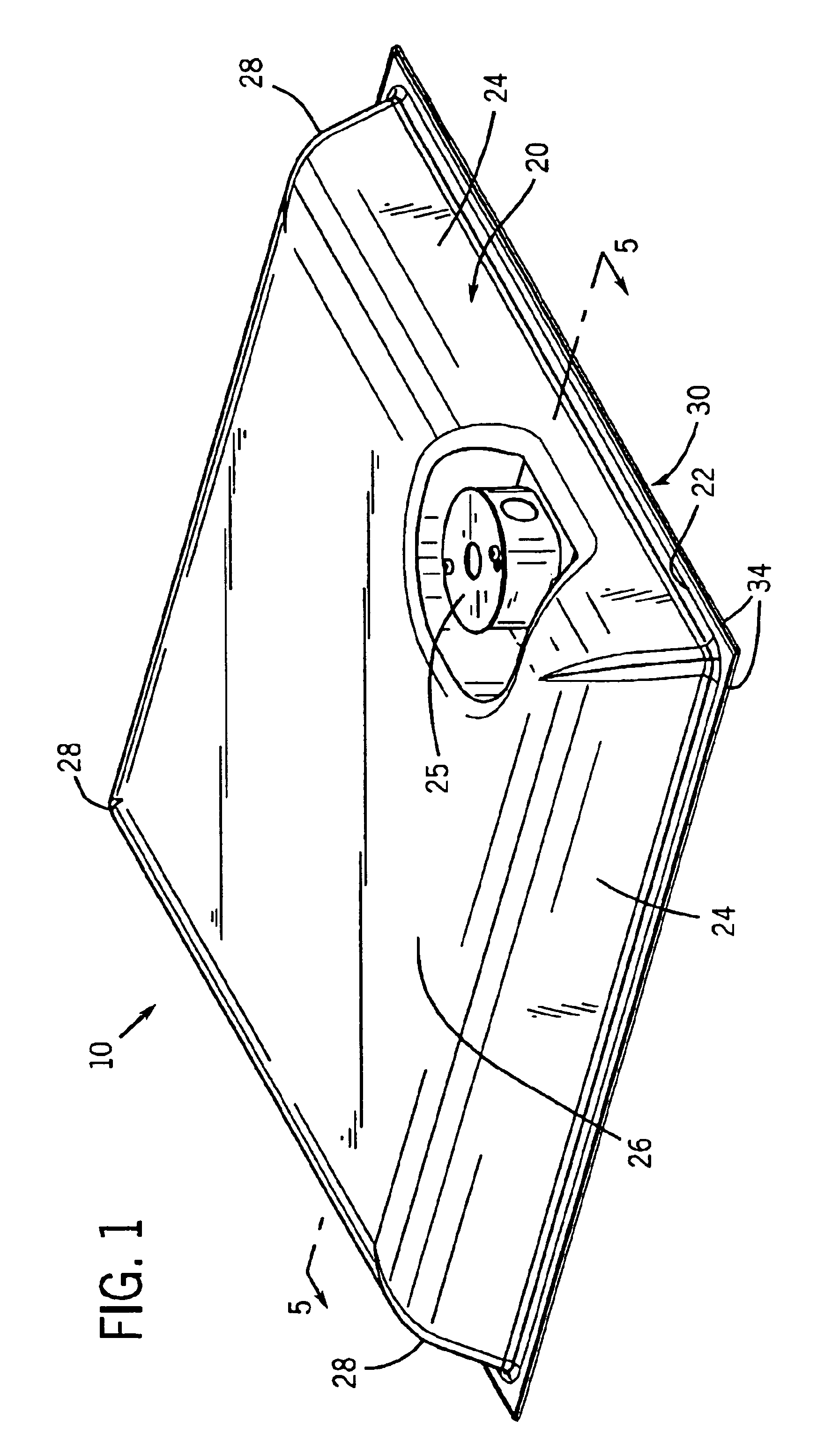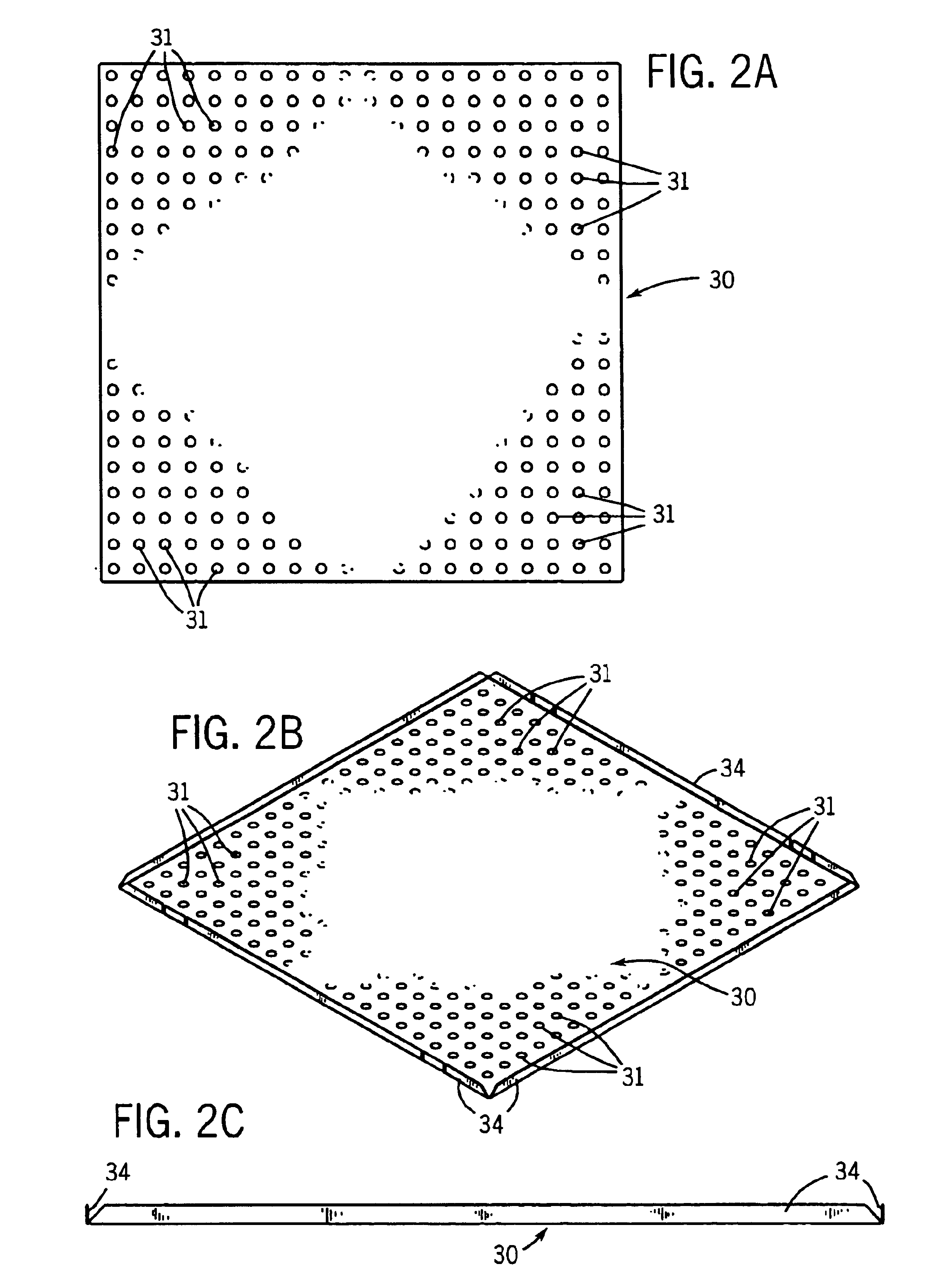Lay-in ceiling speaker
a ceiling speaker and speaker technology, applied in the field of speakers, can solve the problems of reducing the structural integrity of the ceiling tile, reducing the cost of mounting hardware, and requiring substantial installation time and labor costs of conventional speakers, so as to reduce the possibility of smoke seepage, improve the strength of the backbox, and improve the insulation effect of high temperatur
- Summary
- Abstract
- Description
- Claims
- Application Information
AI Technical Summary
Benefits of technology
Problems solved by technology
Method used
Image
Examples
Embodiment Construction
[0020]Referring now to the drawings, a first preferred embodiment of the speaker enclosure system in accordance with the present invention is illustrated in FIG. 1 at the reference numeral 10. The speaker enclosure system 10 is a ceiling speaker preferably having the same size as a standard ceiling tile. As such, the speaker enclosure system 10 is designed to replace an entire ceiling tile and to rest on the same tile framework support. Thus, the speaker enclosure system 10 does not require any additional framework or support for placement on ceiling other than the framework already installed for the tile. The speaker enclosure system 10 therefore blends in with the rest of the ceiling tiles and does not obstruct access to, or the view of, the ceiling.
[0021]Unlike conventional ceiling speakers, there is no need to cut a ceiling tile. A standard 2 foot by 2 foot size is useful for the speaker enclosure 10, although the speaker enclosure system 10 can be made of virtually any size to ...
PUM
 Login to View More
Login to View More Abstract
Description
Claims
Application Information
 Login to View More
Login to View More - R&D
- Intellectual Property
- Life Sciences
- Materials
- Tech Scout
- Unparalleled Data Quality
- Higher Quality Content
- 60% Fewer Hallucinations
Browse by: Latest US Patents, China's latest patents, Technical Efficacy Thesaurus, Application Domain, Technology Topic, Popular Technical Reports.
© 2025 PatSnap. All rights reserved.Legal|Privacy policy|Modern Slavery Act Transparency Statement|Sitemap|About US| Contact US: help@patsnap.com



